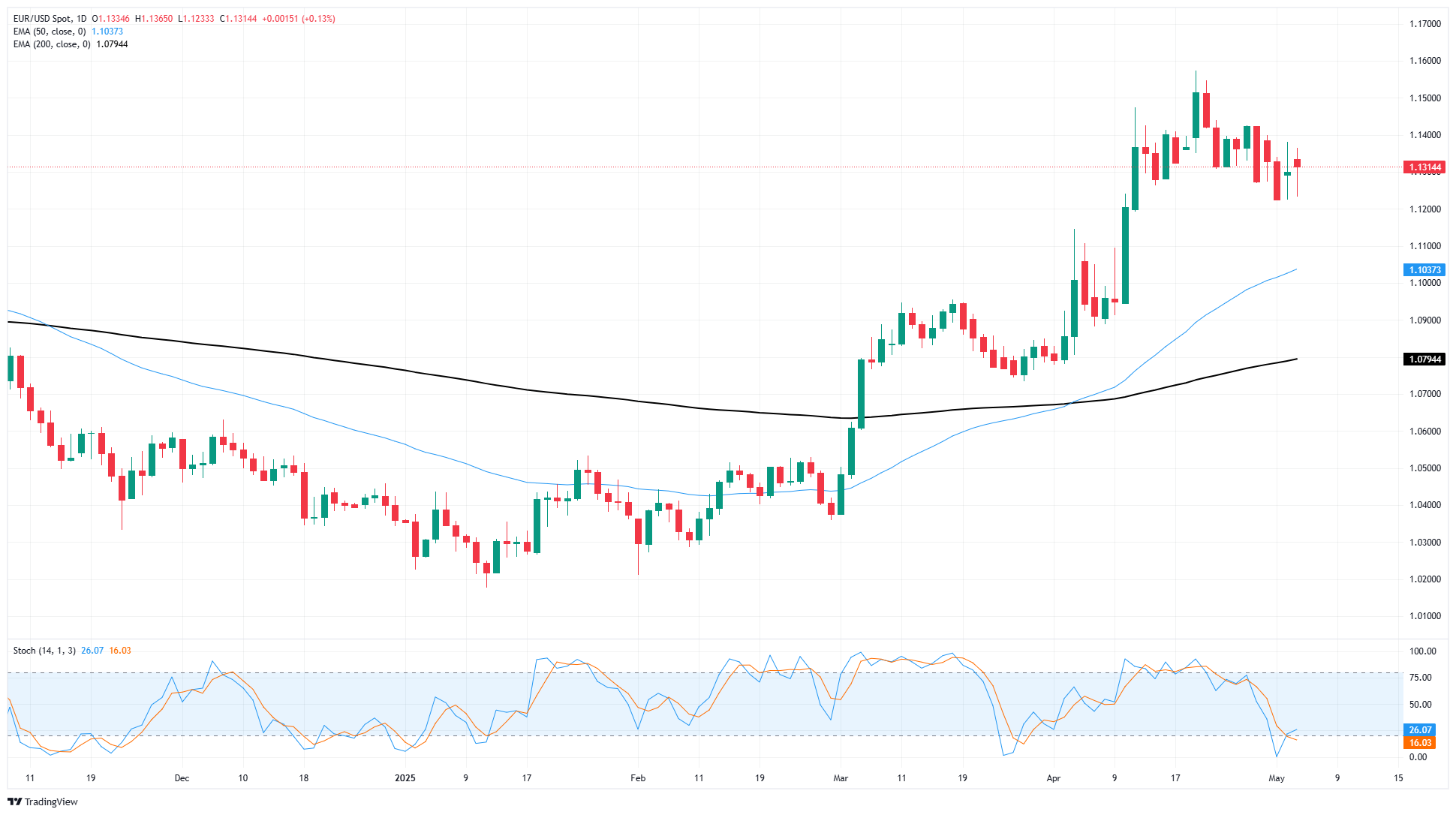EUR/USD grinds sideways as markets pivot to face Fed rate call
- EUR/USD stuck to familiar territory near 1.1300 on Monday.
- A key Fed rate call looms ahead during the midweek market sessions.
- European data takes a back seat this week as investors focus on rate cut hopes.
EUR/USD churned chart paper near the familiar 1.1300 handle to kick off a fresh trading week. The Fiber has been stuck in a choppy consolidation phase as Euro traders struggle to kick off a new push in either direction.
European data remains limited this week: final Purchasing Managers Index (PMI) data due this week is unlikely to produce any surprises, and pan-European Retail Sales figures due early Wednesday are already expected to disappoint markets, poisoning the water supply and leaving Fiber traders to focus on this week’s key Federal Reserve (Fed) rate call.
The Fed is widely anticipated to maintain interest rates steady for now, a decision likely to provoke further criticism from the Trump administration, which is fiercely trying to coax early rate cuts from Fed Chair Jerome Powell. Labor and inflation data appear mostly balanced, but the erratic and unclear trade policies from the White House undermine its own chances for rate cuts, as the Fed remains dedicated to its goal of controlling unemployment and price fluctuations.
Even though the Fed’s rate hold seems almost certain this week, Fed Chair Powell’s remarks will carry added significance for investors after the Fed’s announcement on Wednesday. Market participants are still looking for indications of a shift towards a new rate-cutting cycle, and traders will be on the lookout for any hints of dovishness from Fed officials.
EUR/USD price forecast
EUR/USD has been caught in a rough near-term volatility trap between 1.1500 and 1.1200. Euro bulls look set to have fully run out of gas, but a broad-market Greenback selloff has left EUR/USD bids in the lurch.
Fiber has pumped the brakes on the high side of a multi-year sideways grind, but the next leg in either direction faces stiff fundamental resistance. The Euro is trading comfortably on the high side of the 200-day Exponential Moving Average (EMA) near 1.0800, but recent highs north of 1.1500 appear equally out of reach for now.
EUR/USD daily chart

Euro FAQs
The Euro is the currency for the 19 European Union countries that belong to the Eurozone. It is the second most heavily traded currency in the world behind the US Dollar. In 2022, it accounted for 31% of all foreign exchange transactions, with an average daily turnover of over $2.2 trillion a day. EUR/USD is the most heavily traded currency pair in the world, accounting for an estimated 30% off all transactions, followed by EUR/JPY (4%), EUR/GBP (3%) and EUR/AUD (2%).
The European Central Bank (ECB) in Frankfurt, Germany, is the reserve bank for the Eurozone. The ECB sets interest rates and manages monetary policy. The ECB’s primary mandate is to maintain price stability, which means either controlling inflation or stimulating growth. Its primary tool is the raising or lowering of interest rates. Relatively high interest rates – or the expectation of higher rates – will usually benefit the Euro and vice versa. The ECB Governing Council makes monetary policy decisions at meetings held eight times a year. Decisions are made by heads of the Eurozone national banks and six permanent members, including the President of the ECB, Christine Lagarde.
Eurozone inflation data, measured by the Harmonized Index of Consumer Prices (HICP), is an important econometric for the Euro. If inflation rises more than expected, especially if above the ECB’s 2% target, it obliges the ECB to raise interest rates to bring it back under control. Relatively high interest rates compared to its counterparts will usually benefit the Euro, as it makes the region more attractive as a place for global investors to park their money.
Data releases gauge the health of the economy and can impact on the Euro. Indicators such as GDP, Manufacturing and Services PMIs, employment, and consumer sentiment surveys can all influence the direction of the single currency. A strong economy is good for the Euro. Not only does it attract more foreign investment but it may encourage the ECB to put up interest rates, which will directly strengthen the Euro. Otherwise, if economic data is weak, the Euro is likely to fall. Economic data for the four largest economies in the euro area (Germany, France, Italy and Spain) are especially significant, as they account for 75% of the Eurozone’s economy.
Another significant data release for the Euro is the Trade Balance. This indicator measures the difference between what a country earns from its exports and what it spends on imports over a given period. If a country produces highly sought after exports then its currency will gain in value purely from the extra demand created from foreign buyers seeking to purchase these goods. Therefore, a positive net Trade Balance strengthens a currency and vice versa for a negative balance.
